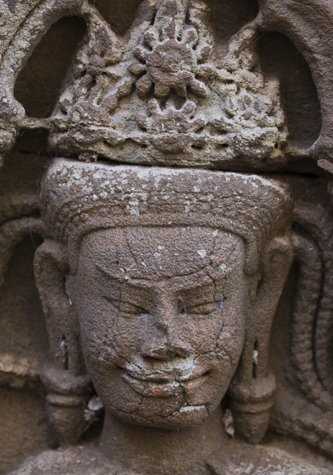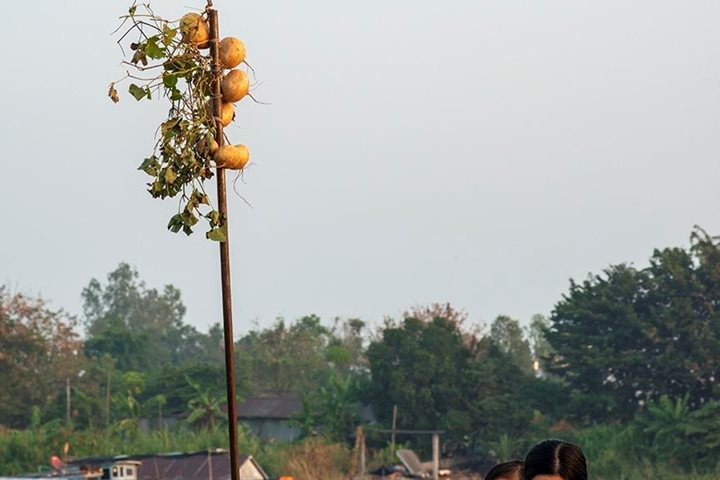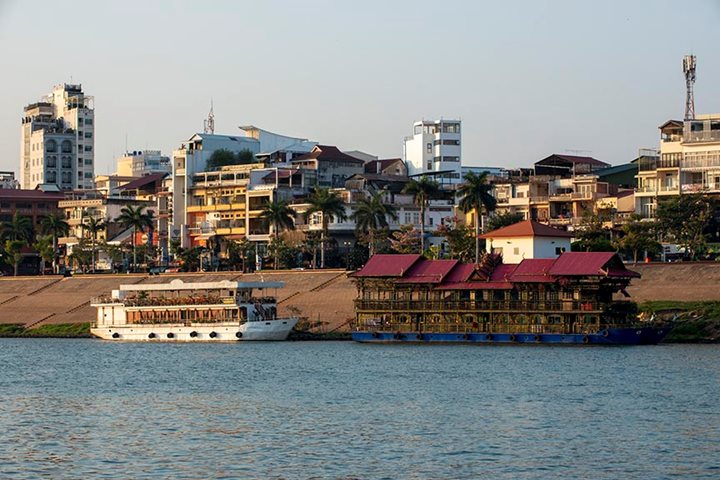At dawn, we are moored near the village of Angkor Ban on the Mighty Mekong. Going ashore, we enter this authentic rural village through the brightly colored pagoda with the typical elements of Theravada Buddhism. Beyond the temple, dozens of wooden houses have survived three decades of civil war, giving us a unique insight into the traditional rural architecture of Cambodia. Single-room houses on tall wooden stilts are surrounded by vegetable gardens, hay stacks, and small herds of cows. These houses are not without reminding us of the habitations of the people of Angkor, an architecture and way of life dating back a thousand years. Mrs. Korn, 81-years old resident of this village, invites us inside her house, which we visit shoeless, as local customs require.
We then proceed through the local market, where live fish and colorful vegetables are for sale, then walk past the high school where some young students in recess approach us to practice their English skills. Further down the main road of the village, we admire the view from a metal bridge over the valley. A young couple harvests rice by hand while another family works in a peanuts field and piles their harvest on a horse cart.
When we get back to the ship, a religious ceremony is about to start. Two Buddhist monks from Angkor Ban have come aboard and initiated a blessing ceremony in the main room of the ship, where our crew is assembled, sitting in respect, and praying with their hands joined in front of their face. The ancestral chanting of the monks reaches the heart of the audience, bringing peace and serenity. Later in the morning, Stephane De Greef introduces us to Airborne Laser Scanning, a new technology which recently transformed our understanding of Angkor.
During the presentation, we raise anchor and sail upstream to the Provincial Capital of Kampong Cham, one of the largest and wealthiest town of Cambodia. We moor on the Western bank of the Mekong, where large winter melons are being loaded on a truck. Kampong Cham is a nice, clean and beautiful town with French colonial architecture and an ancient Angkorian temple, Wat Nokor, dating back to the 12th Century. Its laterite walls and intricate sandstone carvings are typical of the temples built under the reign of Jayavarman VII, the most famous King of Angkor. Some of us walk to the bamboo bridge, while others enjoy a nice stroll in the afternoon along the riverfront back to the Jahan.
Despite our sadness to leave the ship, we celebrate our successful journey with a sunset farewell cocktail party and dinner with all the crew. Tomorrow will see us travelling towards Angkor, the jewel of one of the most amazing ancient civilizations known to man…







